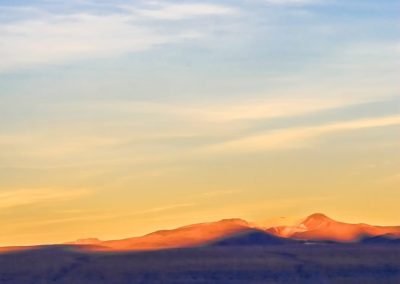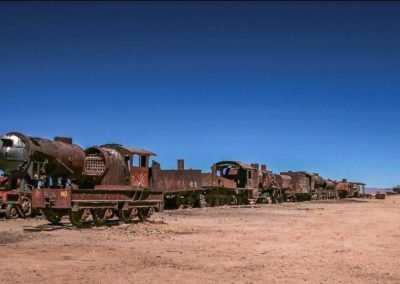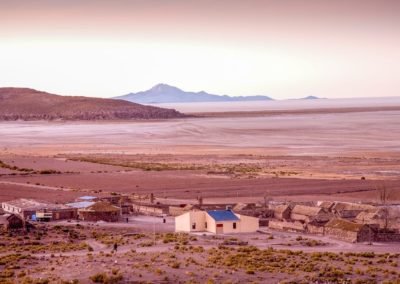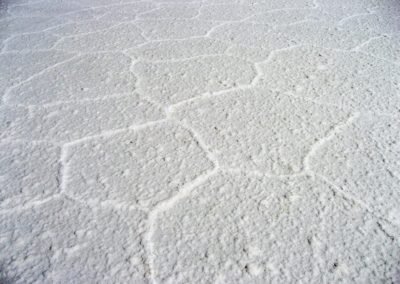Salar de Uyuni
High in the Altiplano of southwestern Bolivia, the Salar de Uyuni covers more than 4,000 square miles.
This is the world’s largest salt flat—a barren pavement of white infinity.
The salar is the evaporated remnant of two enormous prehistoric lakes (Minchín and Tauca), once covering thousands of square miles.
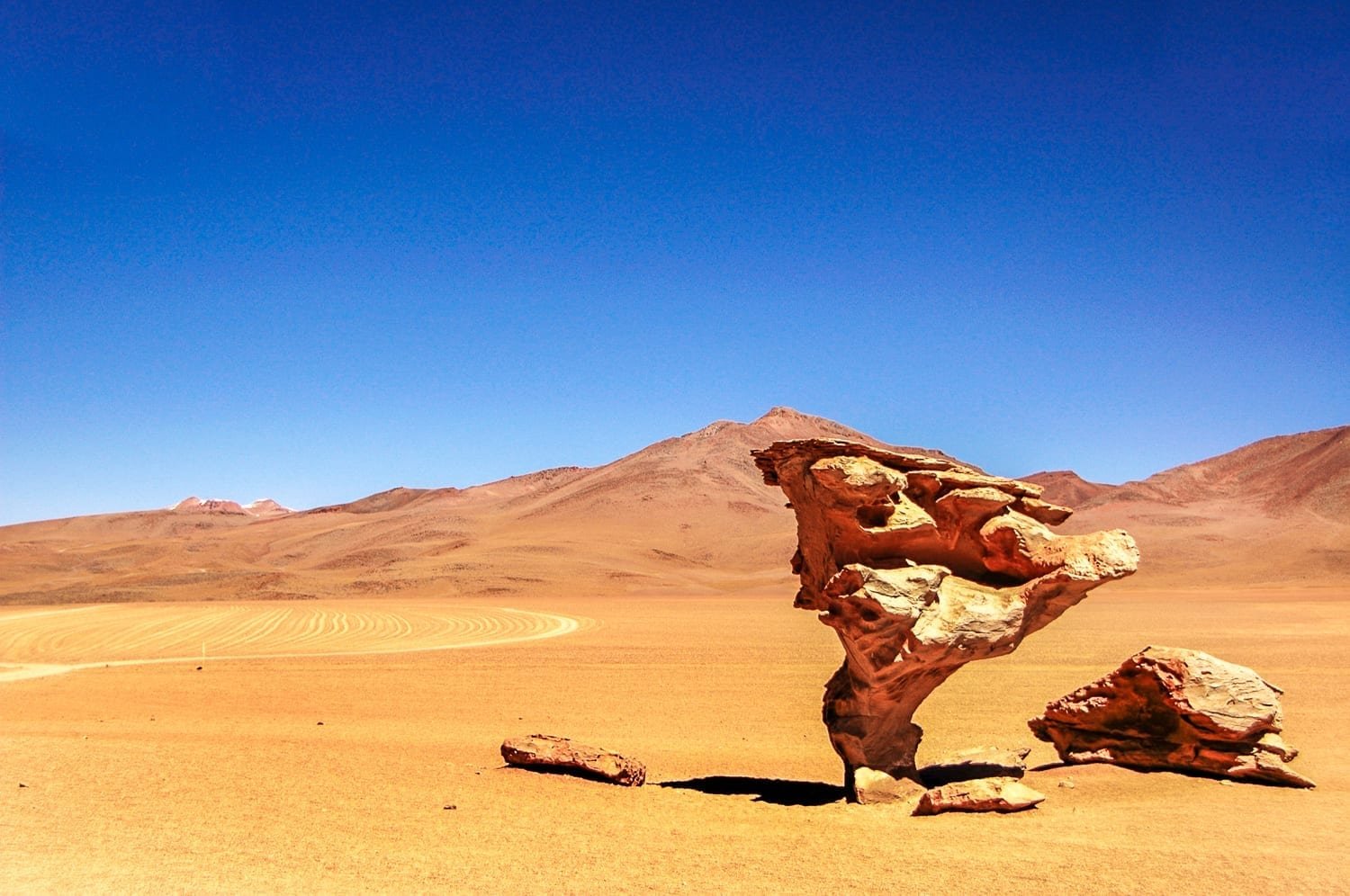
The average altitude at Salar de Uyuni is approximately 11,980 feet above sea level.
Lake Poopó
During the November to March wet season, the Uyuni Salt Flat (or salt pan) is flooded by overflow from the north.
A thin layer of water covers the salty plain, reflecting the sky with astonishing clarity.
Passengers in off-road vehicles crossing the flooded flats often enjoy the sensation of floating.
Three Species of Flamingo
November is also breeding season for the three species of flamingo that inhabit Salar de Uyuni.
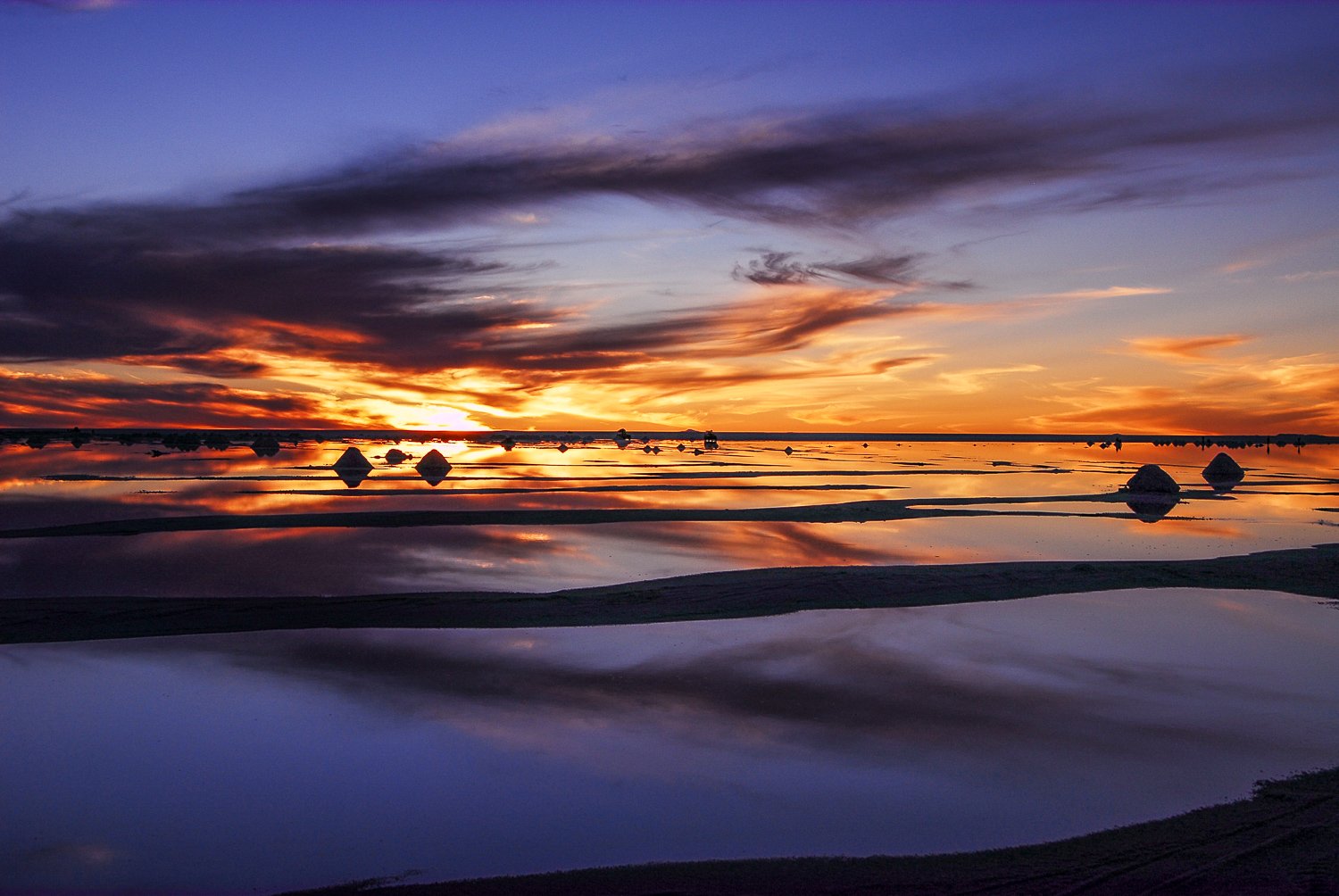
In addition to sodium, this plain is rich in potassium, magnesium, borax, and lithium.
Beneath this solid, salty crust sits a lake of brine. While the lake is shallow in most locations, it intermittently reaches depths up to 60 feet.
Isla Pescador, Isla Incahuasi, & The Train Graveyard
Two notable islands rise from the center of the salar, Isla Pescador and Isla Incahuasi—red volcanic oases covered in towering cacti.
Other attractions include:
- A small museum in Coquesa Village;
- The Tunupa Volcano Trail; and
- A petrified forest.
The base for this region is the town of Uyuni, located roughly 330 miles south of La Paz.
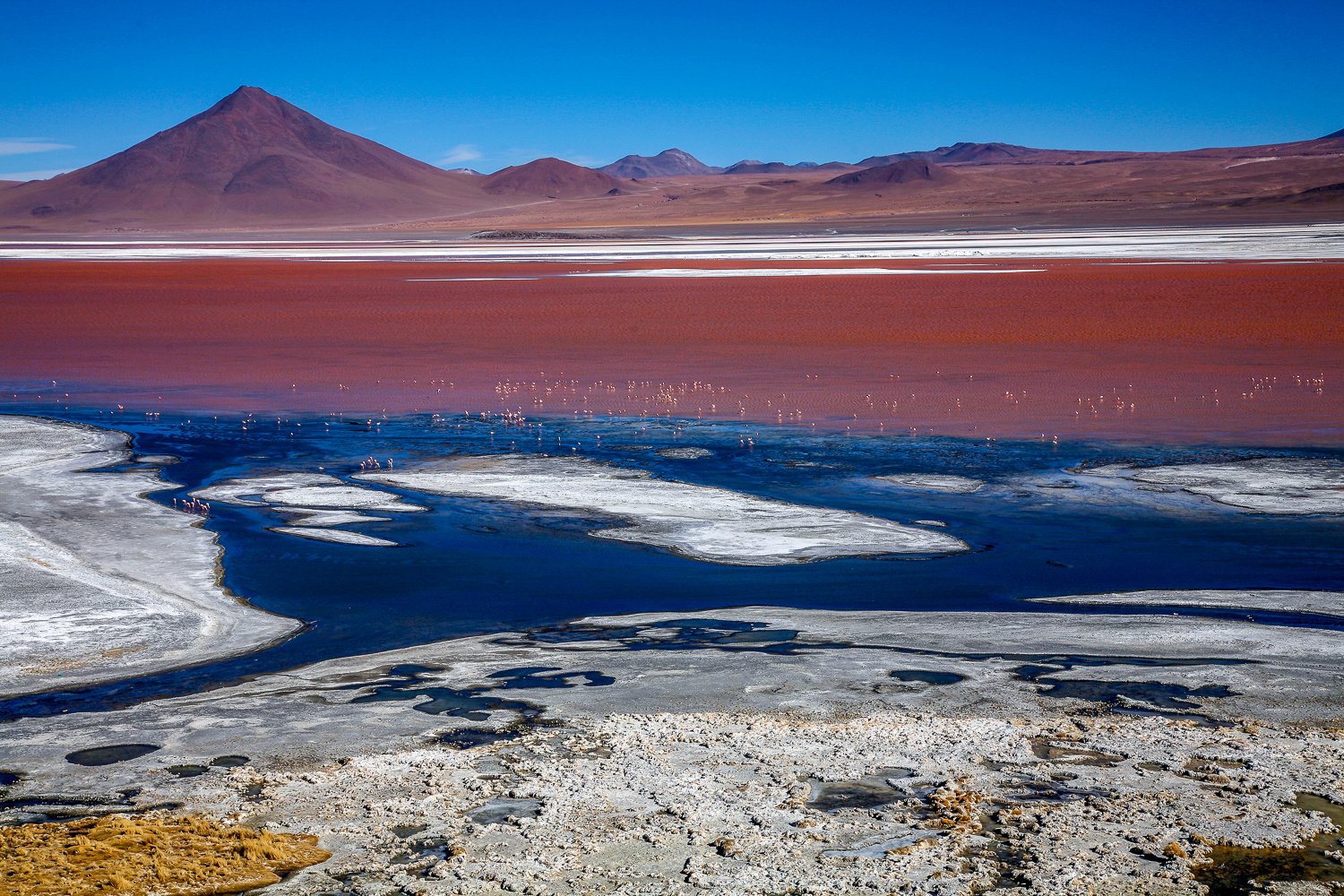
Just outside of town (southeast of the salar) is a cemetery of rusting steam locomotives and ore transport cars.
Most of these trains were abandoned in the 1940’s, after a collapse of the local mining industry.
Hiking Scenic Volcanos & Touring Rainbow Lakes
To the south of Uyuni, visitors can hike scenic volcanoes and take in a stunning rainbow of mineral-rich lakes—blue, red, yellow and white.
Cross-border connections can be arranged to Salta, Argentina (to the southeast) and San Pedro de Atacama, Chile (to the southwest).

Oruro: Bolivia’s Provincial Capital
Midway between Uyuni and La Paz, the provincial capital Oruro is the largest city in the Southern Altiplano.
This chiefly indigenous town is proud of its mining heritage.
Accordingly, history aficionados delight at the depth of learning available at the mining and folklore museum, minerals museum, and on half-day mine tours.
Oruro is also the site of Bolivia’s most famous Carnival celebration—the Dance of the Devils.
Due to its altitude, this region is cold and windy year round. Most visitors travel to Uyuni between June and October when temperatures are less chilly.
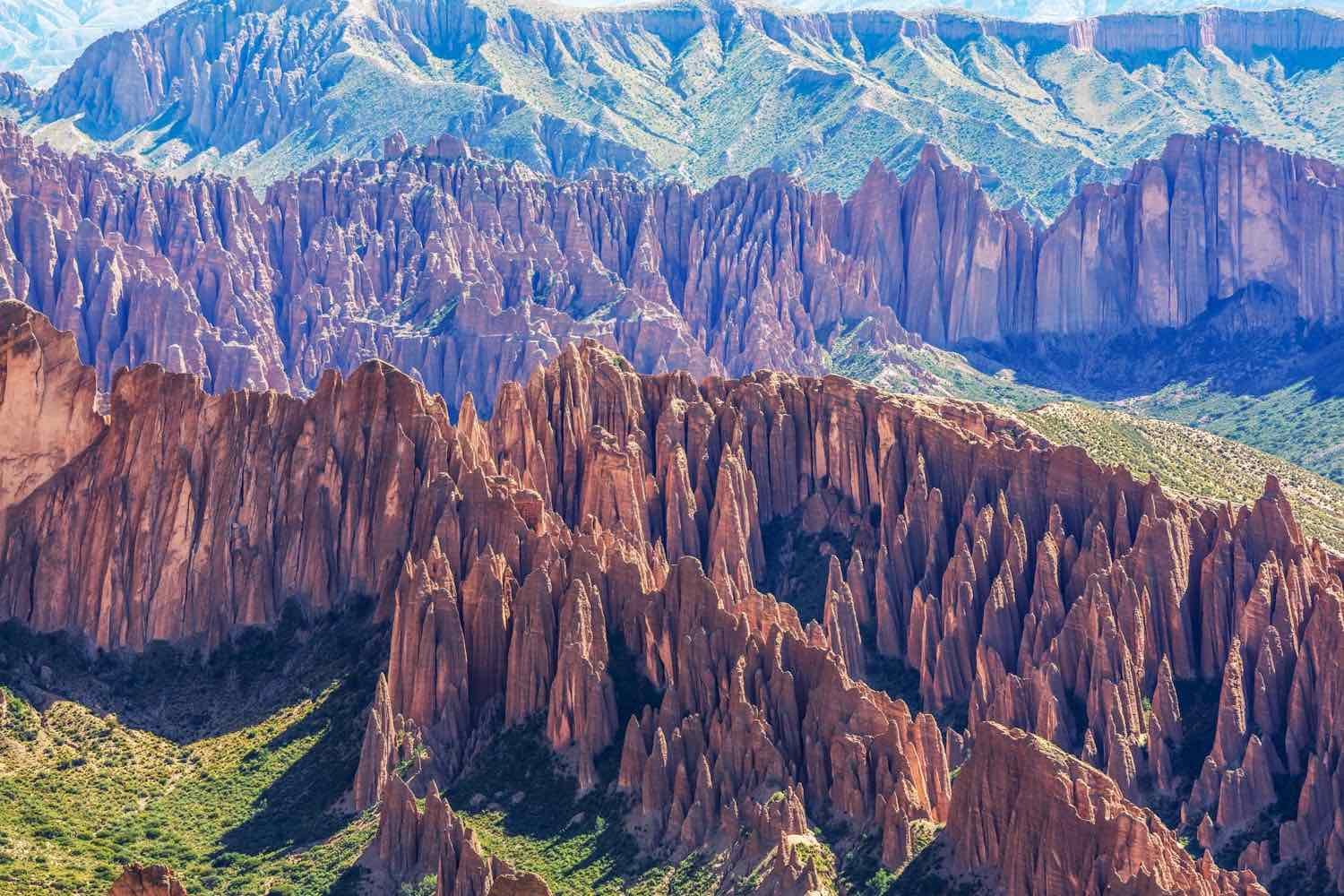
LANDED arranges personalized travel in Bolivia and throughout South America. We organize luxury accommodation, private transportation, and tours with expert guides. Speak with a LANDED travel planner today at 801.582.2100. We’ll take care of the details.
“Kid, the next time I say, ‘Let’s go someplace like Bolivia,’ let’s go someplace like Bolivia.”
Paul Newman as Butch Cassidy
—— HOTELS
HOTEL LUNA SALADA
TAKYA SALT HOTEL
UYUNI AIRSTREAMS
—— ALBUMS & STORIES
UYUNI FAMILY TRAVEL ALBUM
—— COMBINE WITH
JUJUY & HUMAHUACA
LA PAZ
LAKE TITICACA
LIMA & BEYOND
SALTA & CAFAYATE
THE ATACAMA DESERT

